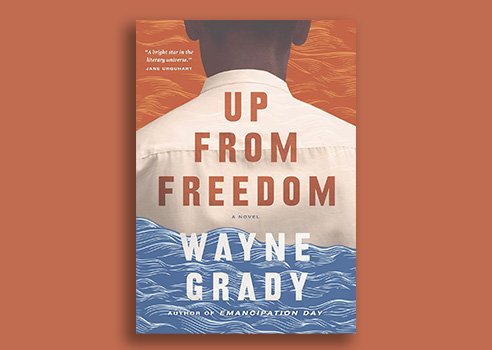Reading time: Less than 1 minute
I like to share interesting pieces of figurative language I encounter in my reading. I write today about several similes from Candian writer Wayne Grady….
A translator, writer and writing teacher, Wayne Grady, is also the son of an African-Canadian father who passed for white. Interestingly, he didn’t discover this fact until he was in his late 40s. Since then, he’s written two novels dealing with identity and race: Emancipation Day, and Up From Freedom.
The latter, which I’m reading now, imagines the journey of his great-great-great-grandmother from slavery in the Deep South to a form of freedom in the North. Emancipation Day was longlisted for the Scotiabank-Giller Prize, and won the Amazon.ca First Novel Award.
The novel takes place in the U.S. from 1848 to 1850 – from the end of the Mexican-American War to the passing of the Fugitive Slave Act – and follows the lives of two main characters: Virgil Moody, the son of a Georgia slaveowner, and Tamsey Lewis, a freed slave who thinks she has found safety for herself and her family in Indiana.
I particularly enjoyed two metaphors that Grady employs in this moving work. Here they are:
- There was a table beside Millican with a scattering of dead flies on it and a Colt Paterson revolver lying on its side, like a dog sleeping with one eye open, staring at Moody.
- When he opened his own eyes again, pain like an electric current was running up and down his spine and hip felt like a bag of eggshells.
An earlier version of this post first appeared on my blog on Nov. 8/18.


